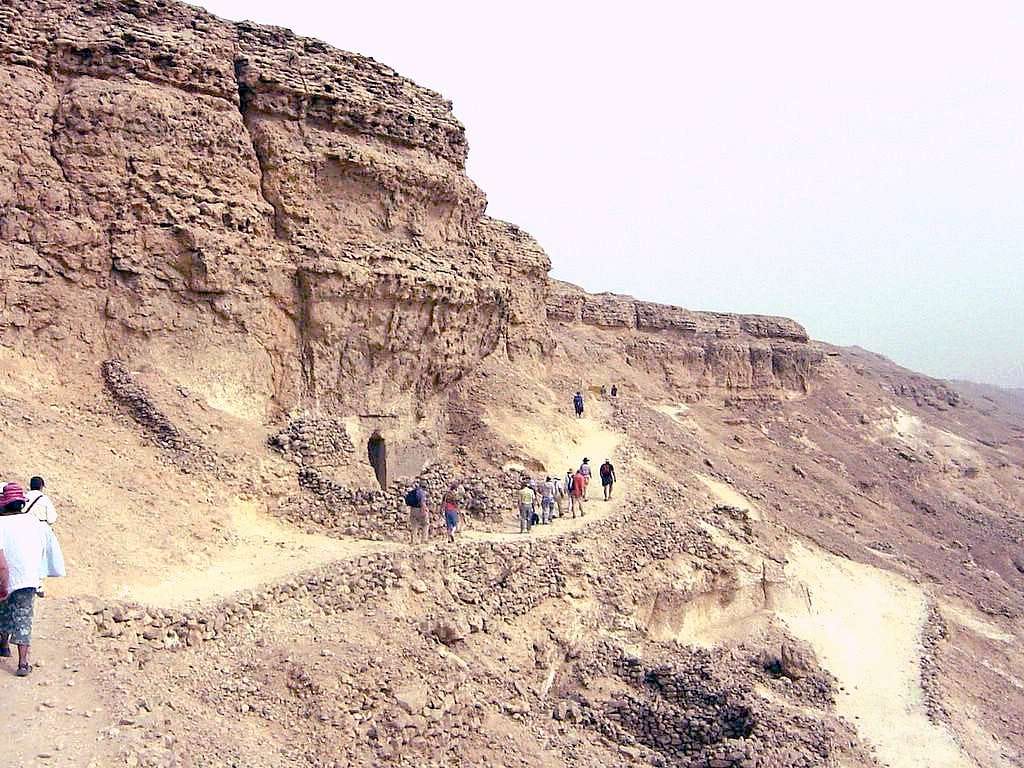Friday Reflection: Amarna Letters
Eric H. Cline on the World They Revealed
Published on November 14, 2025
Throughlines
The conversation with Eric Cline begins with a mystery on the Nile. In 1887, local diggers at Tell el-Amarna uncovered hundreds of clay tablets inscribed with wedge-shaped cuneiform writing—a language never before seen in Egypt. The discovery soon proved to be a collection of royal correspondence between Egypt and its neighbors, written during the reigns of Amenhotep III and Akhenaten. As Al puts it, it was like unearthing “a file cabinet from the Pharaoh’s foreign ministry.”
From there, Eric recounts the chaotic and often illicit world of nineteenth-century antiquities. The official story—of a poor woman finding the tablets while digging for fertilizer—was likely invented by the dealer who had hired laborers to loot the site. Without archaeological context, much of the information those tablets could have yielded was lost. What remained were fragments, scattered across museums in Berlin, Cairo, and London. Their journey became a parable of the age’s appetite for ancient treasures—and its carelessness with evidence.
The conversation then turns to the intellectual race that followed. These letters, written not in Egyptian hieroglyphs but in Akkadian—the diplomatic lingua franca of the Late Bronze Age—demanded the skills of a new generation of scholars. Cline describes the fierce competition between British Egyptologists and German Assyriologists, both determined to decipher them first. Within a decade, figures such as Archibald Sayce, E.A. Wallis Budge, and Hugo Winckler had produced working translations. As Al notes, it was “the Manhattan Project of ancient philology.”
With that groundwork laid, Al and Eric move into the world the letters reveal. The “Great Kings”—the pharaohs of Egypt, the kings of Babylonia, the Hittites, Mitanni, and Assyria—corresponded with each other as peers, while beneath them hundreds of vassal rulers in Canaan and Syria pleaded for protection, complained about neighbors, and begged for gold. The Amarna archive offers a vivid portrait of diplomacy in an interconnected world: alliances sealed by royal marriages, endless negotiations over tribute, and a chorus of petitions from local rulers demanding a few dozen Egyptian archers to keep the peace.
Some letters, Eric explains, are surprisingly domestic or comic in tone: Babylonian kings complain that Egyptian gold is not pure; one ruler chides another for sending too little; another trades his daughter for a few ingots of gold. But the petty conflicts of Canaan’s local rulers—the “Labayu Affair,” or the wars around Amurru—carry a darker continuity. They show Egypt and the Hittites waging proxy wars long before their open clash at Kadesh. Reading them, Al observes, feels like reading medieval Italian politics—or today’s Middle East.
In the final part of their conversation, Cline introduces the digital dimension of his research. Using social network analysis, he and his late wife, Diane Harris Cline, mapped every relationship in the Amarna archive—who wrote to whom, who was mentioned by whom—producing sociograms that visualize the web of Bronze Age diplomacy. The resulting network revealed just how closely connected these ancient powers were: no one, Cline notes, was more than three links away from anyone else. The same analytical method that helped track modern terrorist networks could, paradoxically, illuminate the interlocking world of pharaohs and merchants.
The episode closes with a question Al often asks: why does this matter? Cline answers with conviction. The Amarna Letters are more than ancient curiosities; they reveal the persistence of human politics, ambition, and anxiety. Across millennia, the names may change—Jerusalem, Damascus, Tyre—but the struggles remain familiar. “There is nothing new under the sun,” he concludes. “The weapons have changed, but people have not.”
Questions for Reflection and Discussion
Why does Eric Cline doubt the traditional story of the Amarna Letters’ discovery?
What does the loss of archaeological “context” mean for understanding artifacts?
How did the decipherment of cuneiform transform historical understanding of the Bronze Age?
What does the Amarna correspondence reveal about Egypt’s place in the Late Bronze Age world?
How does Cline suggest that the concept of “gift exchange” blur the line between diplomacy and trade?
What do the vassal kings’ letters suggest about the experience of dependency and fear?
In what ways do the Labayu Affair and the wars over Amurru anticipate later proxy conflicts?
How does social network analysis change the way historians can visualize ancient relationships?
What might modern diplomacy still learn from the Amarna Letters?
When Cline says that “the weapons have changed, but people have not,” what does that imply about the continuity of human nature? If human nature is continuous, what does that do to historical study?
For Further Investigation
Eric H. Cline, Love, War, and Diplomacy: The Discovery of the Amarna Letters and the Bronze Age World They Revealed (Princeton University Press, 2025)
—, After 1177 BC: The Survival of Civilizations (Princeton University Press, 2024)
—, 1177 BC: The Year Civilization Collapsed (Princeton University Press, 2021)
—, Digging Deeper: How Archaeology Works (Princeton University Press, 2020)
William L. Moran, ed. and trans., The Amarna Letters (Johns Hopkins University Press, 1992)
Trevor Bryce, Warriors of Anatolia: A Concise History of the Hittites (I.B. Tauris, 2018)
Amanda Podany, Warriors, Scribes, and Kings: A New History of the Ancient Near East (Oxford University Press, 2024)
—, Brotherhood of Kings: How International Relations Shaped the Ancient Near East (Oxford University Press, 2010)
Donald Redford, Akhenaten: The Heretic King (Princeton, 1987)
Raymond Cohen and Raymond Westbrook, eds., Amarna Diplomacy: The Beginnings of International Relations (Johns Hopkins University Press, 2002)
Trevor Bryce, The Kingdom of the Hittites (Oxford University Press, 2005)
Mario Liverani, International Relations in the Ancient Near East, 1600–1100 BC (Palgrave, 2001)


